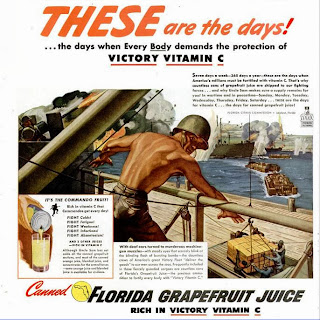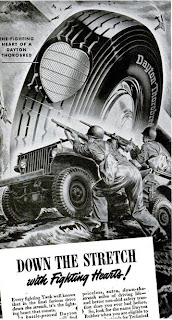Recently, in my inexorable boredom I have been discovering the joys of Google Books. Somehow, Google has managed the rights to thousands of books and periodicals that can be viewed on their website for free. it comprises of mostly out of print books or very old periodicals, but regardless it is an amazing source for someone with enough free time to sift through the voluminous material.
I think the best way to learn about an era is to read periodicals from the period. Even more so than books or movies, periodicals can give a bigger sense about what people in a given time were reading, what they were eating and drinking, what they were shopping for, what subjects were taboo or not, and what they thought was most worthy to be discussed in a public forum. In my free time I have perused some old Time and Texas Monthly articles, and I collected specific examples that I think illustrate how these old periodicals can give us an excellent window into our past.
Here is a picture from an article in Texas Monthly about sororities at the University of Texas at Austin from 1976. The article explains in great detail the benefits and drawbacks for a girl (usually from a background of privilege) entering the UT Greek system, written by a UT alum who enrolled in the early 1960's and pledged. As an alum from this same Greek system, it was an illuminating read. What struck me the most was how little had changed in almost 5 decades. I was honestly expecting much more to be different, but so much of the article described almost to a T many of the same experiences I went through.
Here's and ad from the same 1976 Texas Monthly issue. Nothing extraordinary, however I just really wish these boots were still in production. I would buy a pair in a heart beat.
This picture is from an issue of Time from the 1940's, as will the rest of the images. I thought this one was interesting because it was an example of the sexualized marketing I discovered throughout issues of Time from this era. The old canard about how oversexualized our own modern culture has become really doesn't have much grounding when you see voluptuous young models in skimpy clothing selling fucking insect repellant during the 'Greatest Generation' (something I gather would be seen as being in poor taste today).
This is another great example of sexualized advertisement, but with a hint of nationalism! I'm sure those limey Brits were none too pleased to see ads advertising some intimate 'R&R' between American servicemen and British girls. But hey, if you're about to hit the beaches of Normandy, why not try to find a Cockney princess of your own to keep you company...
These wartime advertisements are really awesome to me. They highlight the importance of their products in the war effort, with the ads showing intense action with the advertised product in the limelight. I'd much rather my orange juice ads looks like this than have Phil Dunphy make lame jokes about oranges.
This was an interesting image of a ball at the Virginia Military Institute. I think it's an impressive image of young couples dressed to the nines with a dramatic depiction of the Institute's former war glories in the backdrop. Love and war.
This article was extremely interesting to me, and something I had never heard of in my readings on Reinhard Heydrich, one of the most evil motherfuckers in that unprecedented cabal that was the leadership of Nazi Germany. It describes his skillful assassination at the hands of Czech freedom fighters through the eyes of an American eyewitness, who just happened to be in Prague at the time, trapped behind enemy lines when war was declared 6 months before. The fact that he witnessed this momentous occasion and somehow managed to escape back to the United States is quite a tale indeed.
Here's where it starts to get real ugly. Yes, this is a real info-graphic published in Time magazine, explaining to its readers 'how to tells Japs from the Chinese' and enumerating supposed general physical characteristics between people from the two countries. The article was written in an almost sanctimonious appeal to its readers to ensure that they don't wrongfully abuse someone of Chinese heritage, lest they attack one of our allies. It really doesn't get much uglier than this, but this is December 1941 we're talking about. Is it really surprising that a country that at the time had institutionalized segregation would not find this offensive?
This is from another issue of Time from a few years later than the Japanese/Chinese info-graphic. At this point, hundreds of thousands of Americans and Japanese had already died. Emotions were running high. This picture was attached to an article about a female factory worker who had received a Japanese skull in the mail from her boyfriend who was in the Navy at the time (She is writing a 'thank you note' in the photo, pondering the skull on her desk). While the photograph did manage to cause a stir in the military, the fact that Time received it and was willing to publish speaks volumes about the dehumanization of the Japanese during World War II. It is actually really hard for me to wrap my head around this level of casual brutality.
In an example of the cognitive dissonance I uncovered in many issues of these periodicals, the published letters in response to a Time article about a Japanese-American itinerant farmer, Mr. Yamamoto, who was collectively banished from a small New Jersey town during World War II really surprised me, both for their candor and diversity of opinions. The print is hard to read, but I'll offer some summaries. Some letters, unsurprisingly, offer nothing but congratulations for the residents of the town and condemnation towards the Japanese-American farmer (One of these articles is from, you guessed it, Birmingham, Alabama). But most of the letters published by Time offer solidarity for the unfortunate farmer, with one even coming from a farmer offering Mr. Yamamoto a job at his farm. One letter acutely compares the treatment of Mr. Yamamoto to "the attitude towards 'Mr. Finkelstein'" in Germany (Her words, not mine). It is just incredibly interesting to me that the same magazine that unflinchingly publishes a Japanese skull used as a war trophy also displays the positively American acceptance of anyone willing to work hard, regardless of race or creed. It also proves to me that all history is complex, and no one worldview or opinion can accurately describe the attitudes of millions of people. Reading these magazines have also underscored for me the importance of the freedom of the press (the only industry named in the Constitution), one of the cornerstones of our democracy, even if at times the media can espouse less than satisfactory viewpoints.












No comments:
Post a Comment